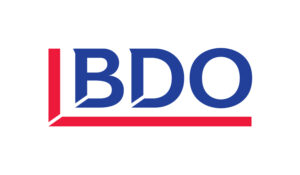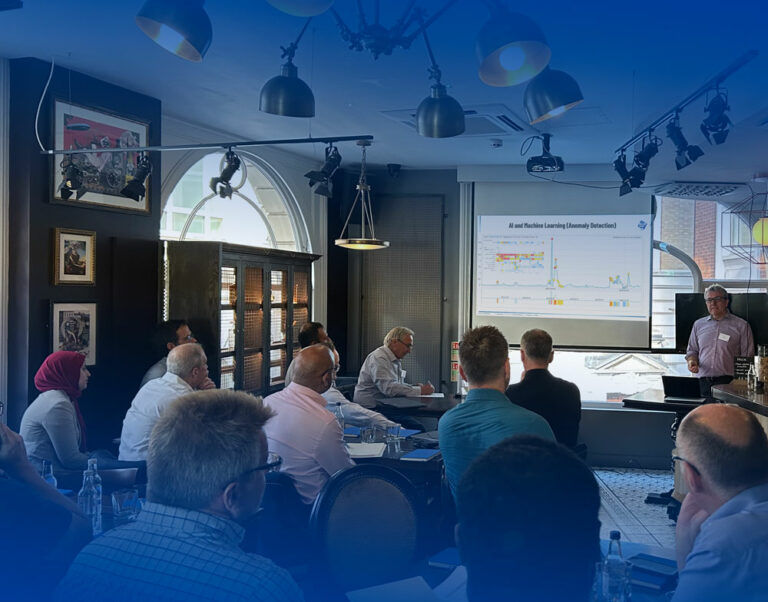insight
How to get your engineers and salespeople talking the same language

It's a challenge faced by any fast-growing tech business - how to make sure that your sales team and your technical team understand enough about each other to work together for optimal business success.
We asked an expert from each side of the room for their tips on how to bridge the divide...
reprinted from BDO Plugd:In Magazine.
BDO: Tell us a little bit about yourselves and your experience.
 Phil Guest: I’ve been selling media and technology products for the past 30 years for companies like AOL, Fox, Capital Radio and numerous publishers. My transition to building new businesses happened about 10 years ago, when I joined a social data analytics company. I quickly realised that what I had learned previously in sales was not necessarily applicable to early stage businesses. After a few bumps and bruises, I developed a stage-appropriate sales framework for start-ups that are at the point of scaling beyond early founder-led sales efforts. Today, I work with start-ups across a broad range of sectors to design and implement transformational sales strategy through an inclusive, hands-on approach, designed to get them on the right revenue trajectory as quickly as possible.
Phil Guest: I’ve been selling media and technology products for the past 30 years for companies like AOL, Fox, Capital Radio and numerous publishers. My transition to building new businesses happened about 10 years ago, when I joined a social data analytics company. I quickly realised that what I had learned previously in sales was not necessarily applicable to early stage businesses. After a few bumps and bruises, I developed a stage-appropriate sales framework for start-ups that are at the point of scaling beyond early founder-led sales efforts. Today, I work with start-ups across a broad range of sectors to design and implement transformational sales strategy through an inclusive, hands-on approach, designed to get them on the right revenue trajectory as quickly as possible.
 Tim Palmer, Blue Hat Associates
Tim Palmer, Blue Hat Associates
Tim Palmer: My background is as a technologist. I’ve always worked in or around technology, starting my career with Oracle. Most of my career was actually in finance banking, and asset management businesses, but I moved into ad:tech for a couple of years before setting up my own consultancy, Blue Hat. I set the business up to be a partner-led technology organisation. We want to get away from this perception of technology people as the outsiders, people who just write code and are expensive and a bit prima donna-ish, but who instead are people who work alongside the business, helping the business to solve its real problems.
BDO: So let’s look at the scenario of a tech company which has come from a very R&D background. It’s got some exciting IP, secured some initial funding and is now at a point where it’s realised that to commercialise things further they've got to get some sales help in. So what should happen next at this point? And what are the pitfalls to avoid?
Tim Palmer: I think the first most important thing is to establish what in agile would be described as a ‘definition of done’, but which in business speak would be, ‘What's your actual goal in this?’ If you don't really know where you're heading, then you're going to build something which isn't particularly well-thought-through, and the user journey is going to be a bit messy. And that means you're not going to have solved a problem which you can then turn into money, into something you can sell.
So you might want to run some workshops across the business, tandem with the commercial function, to look at what competitors are doing but also to look internally as to what your capabilities are. You need to say, ‘What of these things can we automate and build into a product we can sell to people?’, rather than, ‘Let's just go and invent something from scratch.’ You need to build on what exists already, and if it doesn't exist already you need to build a very rough version of it and trial it. Then, once you've got that done, you can go and build the proper version of it.
Phil Guest: From my experience, a lot of founders are generally coming from a technical or product background. The key questions that arise when you go to market to actually sell the product are things like: are you solving a problem that truly exists? And if it does exist, is it pressing enough and one that people are actually prepared to spend money on solve? You don't really find that out until you get out the door and go and talk to people.
So, very early in the product development cycle, it pays for those founders to go out and have conversations with end users and potential customers. In that process, sales are often the first point of contact to help you find out whether what you thought was the good product actually is a good market fit. It’s vital to have that intel early on, because it could well steer your product development in the future.
BDO: Often you have tech businesses where the founder is the only salesperson in the early stages of the business. What are the challenges to address there?
Phil Guest: In the beginning of building a new business, sales have to be led by the founders. No one will sell a product as well as the person who conceived the idea or who developed the code. And that's important, because when it comes to raising money, you've got to be able to walk the walk as well being able to build the product.
But the true test for any company or product’s success, is whether or not at the point founders hire their first salespeople, others can replicate the early sales success. As the business gains momentum, the founders have to focus on other areas and at some point they will start bringing in sales specialists. This is why I encourage all the founders I coach to document the sales process from the start. It will help with onboarding sales people, and reveals strengths and weaknesses in your product positioning and sales process, saving you a lot of time and angst in the future.
Tim Palmer: I agree with Phil that when you've got a founder who is driving the sales and has built the product, there is always the challenge of unpicking what needs to be done for someone else to pick up the baton. In my experience the challenge comes when the CEO is both the product expert and the sales person, and must make a decision on which of these two critical roles to continue performing, splitting the tasks between a sales manager (CCO/CRO) and a technology manager (CPO/CTO).
One is the front-of-house CEO - the classic CEO who is the evangelist of the product as they're selling it. The other is the CEO who effectively becomes the CTO and then brings in a sales manager who is the incarnate CEO to come in later. The division of leadership from maybe a single founder into two or three people, is a relatively straight forward step.
BDO: And what happens next?
Tim Palmer: So now you have a separate technology or product management function, and a separate sales function, and you need to go and build things. And you then have the risk of competing agendas. Sales is focused on what people are going to buy, and what people are buying; products are all about the art of the possible with the technology. The challenge is to ensure a healthy dialogue between the two, to find a way of allowing those conversations to happen, and not to be too silo-managed by these new teams who are all trying to stack their own authority.
With salespeople, of course, the pressure is on to go out and promise the Earth. A salesperson under pressure to hit targets may be tempted to overpromise what the product is capable of doing. On the technology side, there is also a temptation to overpromise what's actually going to be delivered. So, you want to be seen to be a super helpful person, and you want to deliver lots of good technology, and you've probably got quite a big budget to go and spend. So, you end up saying, “Yes we can do that, we’ll put it on our list of things to do and we'll get round to doing it.”
Now maybe you don't hit the pain point straight away because you've got a good level of funding giving a long runway or because you're funded by someone, or may be because you've got a period of grace before anyone really starts scrutinising what you're doing because it’s all so new. But at some point, the chicken will come home to roost and you'll find that you haven’t actually built what the product needed to do, or what sales promised it did. The key with this scenario is to harness this tension and have those arguments early on, to have a bit of fire in your belly and have these things out early on.
Phil Guest: The product side has a well-established learning development cycle, which takes the team and the tech through a series of iterations until eventually you have a product solution. That approach doesn't tend to happen so much on the sales side of the business, and that's a big gap, because the reality is there's just as big a learning curve on the sales process side as there is in the product development process, and the two should be very well aligned.
To expand on this further. In the very early days of selling a product, you don't really know a great deal about what it takes to succeed; whether the product answers a problem that people are willing to pay for; how much they're willing to spend; what the sales process is like; how long it's going to take; or even who your customer truly is. There's an awful lot you don't know about selling your product in the early days, in the same way that you don't know all the features of that product as you develop it. As you move along that sales learning curve, your understanding starts to accelerate, until you get to the point where the sales engine is pretty much coin-operated. By that I mean, you know what it takes to attract new customers and how long it takes to convert and onboard them. That learning curve, which I talk a lot about in my work with founders, is very closely aligned with the way that products are developed. That single mindset is a way to align sales and technology towards a common goal.
BDO: So the sales team can actually have a significant influence on product development?
Tim Palmer: Very much so. The old view in technology was very top-down. You had to go through a senior manager, say the director of sales, where you'd get your requirements. But for me it was always the people on the ground that I wanted to speak to, the people who held the client meetings or the customer success team who were supporting the sales team. It’s vital to get access to all those touch points that the organisation has with clients, because all the clues are in those people and what they're doing.
In a well-organised sales team this information is being bubbled up so you actually have access to it, but quite often in businesses the sales team is completely focused on targets and the management is not asking, "Well, where is that product lacking?" Or, maybe there aren’t actually the channels in place for feedback to reach the technology team. I hear this a lot from sales teams that say, "Oh, you know we don't get asked about what the product should feature." I think that's absolutely criminal to think the guys that are selling it are not being asked. It's the job of the technology team to get out there and actually speak to the sales guys. I always used to go to sales meetings, not to sell but because I just wanted to get the intelligence and meet the clients first hand.
Phil Guest: Having a good feedback loop is really important in any successful early-stage tech business, and having technical people join you in customer conversations is very valuable on a number of levels. They get to hear things first hand, and also you get to bring a different perspective to your customer that will add different insights. It’s very powerful when you can sit in the room with a technologist and take your customer conversation to a whole new level. But I would add a word of caution here: salespeople will often look for the quickest route to closing that deal, and sometimes they may look to blame the lack of a specific feature for a lack of closed deals. It takes a strong leadership culture to interpret what is really relevant to the product, and what is just someone having a tough time selling.
Tim Palmer: That’s also where the product backlog and the governance around the project comes in. People often roll their eyes when you say governance, but actually governance is what stops everyone from just reacting to the new flavour of the month, rather than reacting to truly critical issues. I’m sure Phil and I can both think of examples of where the sales team has said, "We just need to have this feature and if we do, we'll close this colossal deal." But a strong leadership team can cut through that noise and say, for example, ‘That's not a block to selling the product, it's a nice feature to have but it's not going to make a difference to that client. The issue here is a salesperson who’s struggling.’ So you need leaders who can separate out the noise in those feedback channels and are prepared to have the awkward conversations where necessary.
BDO: How do you look for the right salespeople in a fast-growth tech environment?
Phil Guest: In the early days, your salespeople have got to be able to do everything. They've got to be comfortable with reaching out, engaging, putting together presentations, pitching, negotiating, closing, contracting, and onboarding. They're like a one-man band, but as you transition through the lifecycle of the product, you move into this “garage band” setup if you like, where you've got maybe three or four people working the sales function who are all capable of doing a bit of each other’s job, but can also specialise in one area. This is round about that time you're starting to think about hiring a VP of Sales. Those people come with a bit more experience, a bit more structure and a lot more process. Ultimately what you're aiming for is this coin-operated approach, and at that stage, the most suitable people tend to be more regular operational types who are comfortable and happy with routine structure and process.
You can see that the type of person you have early on in sales at the start of a company versus much later in its lifecycle are very different. Now that’s not to say that everyone will need to be replaced as you grow, though some will drop out. What you look for in a very early tech company are people who are adaptable, who buy into the culture and the company’s vision, who fit into that dynamic, hyper-fluid environment, and most importantly, who have a growth mindset and can be coached.
BDO: And what about when it comes to hiring technology people?
Tim Palmer: When you're looking at companies where technology is a differentiator rather than just part of a commodity offer, the technical team need to be presentable. They're not salespeople but they need to be able to put their head up and listen to someone, have empathy, to be able to communicate. That's a classic anti-pattern to what a technology person typically perceived to be.
I am of course very happy to say that there are plenty of technologists who are able to have good communication skills, but it's certainly a challenge when you're looking at a tech startup: Do you go and hire the smartest kid out there who's got absolute loads of the right technology experience, but actually you wouldn't in a month of Sunday's put them in front of the clients? Or, do you go for someone who has great interpersonal skills but maybe doesn't have quite the same tech edge? I think that's quite a big challenge when recruiting, and usually you go for balance. You have your super-geeks who are extremely strong technically and prefer the back-office environment; and then you have some technology people who can do that bridging when clients require to see a bit more information about what the product does, perhaps do some technical due diligence, for example. These are typically people who are looking for careers into analysis, product design, often with a view to starting their own businesses; they’re more entrepreneurial in their ambition.
BDO: When is the right time to get serious about sales? Do early-stage tech businesses tend to jump the gun?
Phil Guest: If anything, you get more companies that haven't thought about what the sales process looks like until quite late in the day. What they'll do is throw a couple of salespeople at it, thinking, ‘We've got a product, we're ready to go, it's good enough to release to the market and we've done a few early deals through our network, it should sell itself.’ This is a major challenge for most start-ups. Why? Because anyone can sell to the first 10% of a market - they’re the innovators, the early adopters who will buy most things once. But the real money comes from selling to the early and late majority, and to get to them, you have to get across what is commonly referred to as ‘The Sales Chasm’. When businesses throw a few salespeople at the problem in the belief they have enough traction, they quickly realise the lack of a defined process, structure and procedures is a major limiting factor. This is one of the earliest points of failure for many tech start-ups and is so simple to avoid.
Tim Palmer: I think there’s a similar thing on the product side. You get the early adopters who enjoy technical features which are innovative and exciting, and quite like things that are a bit rough around the edges. But to get to scale you need to get the bread-and-butter things right. You need to make it easy for the sales team to process payments, for example. You need things to be very, very streamlined so that you're not going to totally swamp your sales team with complexities around the sales process, so that as your sales start picking up you are then able to handle it. A lot of tech companies don't seem to recognise that the actual product build is 10% of the innovation and 90% of it is actually the hard brute force of just actually making everything efficient, which then means that when the sales team close deals, the deals actually close and stick, and they can then start to get the referrals and the trust that builds loyalty.
Phil Guest: And that's what we talk about when building scalable, repeatable business models. The playbook for what a turnkey B2B SaaS sales operation looks like is pretty well-defined these days, thanks to books like Predictable Revenue by Aaron Ross, who built the sales engine at Salesforce. But the challenge that a lot of tech companies have is that they don't know how to go from the very flat, founder-led sales structure of today, to that big predictable sales operation, where you've got clearly defined teams of people managing outbound, inbound, closing deals, and managing customer success. That's the missing link in many tech start-ups I help; how to cross the sales chasm with a framework that grows with the business.
BDO: Does culture play a part in bridging the sales:tech chasm?
Tim Palmer: I think it’s important to understand that salespeople and tech people are often built quite differently. I think salespeople love to be optimistic and positive, so it’s easy for them to get deflated by technologists – who love looking for problems because they are natural problem-solvers.
At one company where I worked, we actually started a ‘Hug a techie’ initiative. The idea was, if you see a techie in the kitchen, go and have a chat with them – they might not always be the most vocal, but that's because they have a lot going on in their heads, trying to solve your problems. It was a bit of a joke, but it did help to break down those barriers and to get people to talk to each other.
Phil Guest: And that comes from the leadership as well. If people see there’s a strong rapport between the Head of Commercial and the CTO, for example, that sets the tone for everyone else.
Article republished with permission from BDO.
Original published February 2019.




